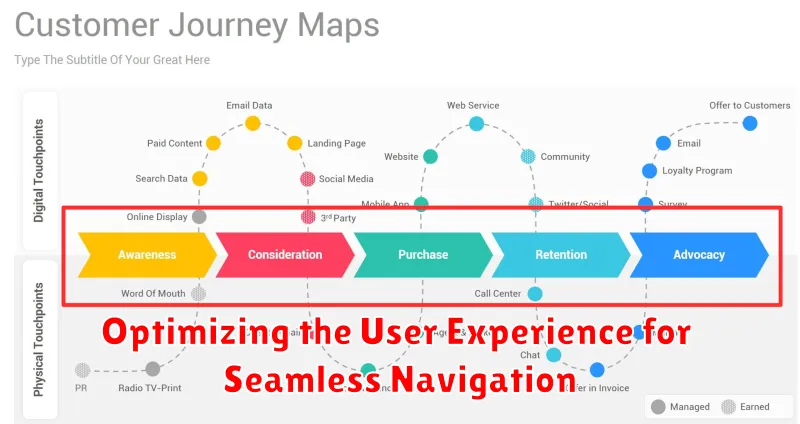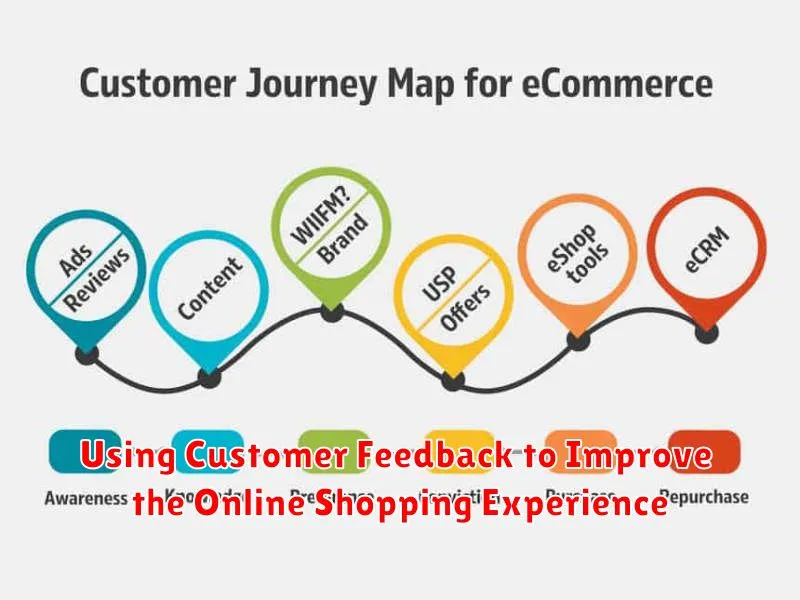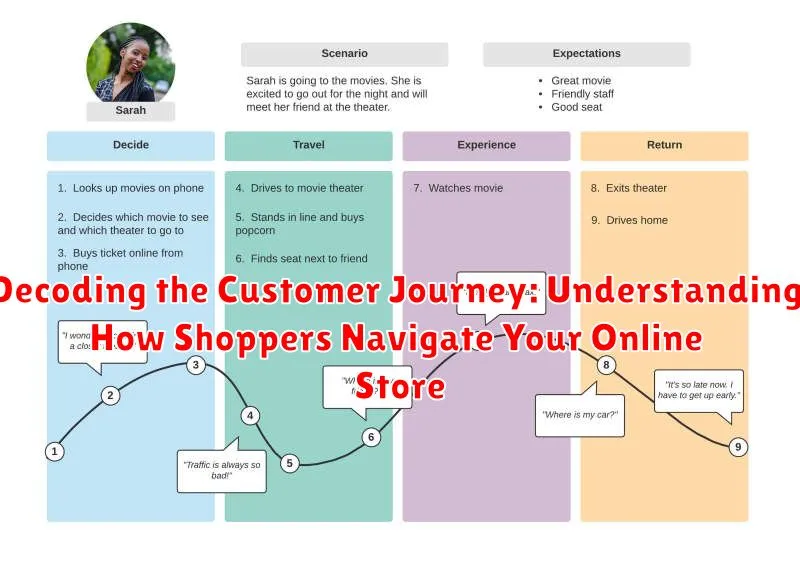In today’s competitive digital landscape, understanding the customer journey is paramount to the success of any online store. Decoding the customer journey involves mapping out the various touchpoints and interactions a shopper has with your brand, from initial awareness to post-purchase engagement. By gaining a comprehensive understanding of how customers navigate your online store, you can identify areas for improvement, optimize the user experience, and ultimately drive conversions. This article will delve into the key stages of the customer journey, providing actionable insights to enhance your online store’s performance and foster stronger customer relationships.
From the initial search query to the final purchase confirmation, each step of the customer journey offers valuable data and opportunities for optimization. Decoding these intricate steps allows businesses to personalize the shopper’s experience, address pain points, and create a seamless and engaging journey within your online store. This understanding is essential not only for attracting new customers but also for retaining existing ones and fostering brand loyalty. Join us as we explore the intricacies of the customer journey and uncover strategies to enhance how shoppers navigate your online store.
Mapping the Stages of the Customer Journey
Mapping the customer journey involves identifying the distinct phases a customer goes through when interacting with your online store. Understanding these stages allows you to tailor your strategies to effectively meet customer needs at each point.
A typical customer journey can be broken down into the following key stages:
- Awareness: The customer becomes aware of a need or problem and begins researching potential solutions. This is where brand visibility and initial impressions are crucial.
- Consideration: The customer evaluates different options, comparing products, features, and prices. Providing detailed product information and customer reviews can significantly influence decisions at this stage.
- Decision/Purchase: The customer chooses a product and completes the purchase. A smooth and secure checkout process is essential to minimize cart abandonment.
- Retention: After the purchase, fostering customer loyalty is key. Post-purchase engagement through email marketing, personalized offers, and excellent customer service helps build lasting relationships.
- Advocacy: Satisfied customers become brand advocates, recommending your products to others. Encouraging reviews and social sharing can amplify your reach and attract new customers.
By understanding these stages, you can create a more effective and personalized experience for your customers, ultimately leading to increased conversions and long-term success.
Identifying Key Touchpoints in the Online Shopping Experience
Touchpoints are crucial interaction points between a customer and your online store. Identifying these touchpoints provides valuable insights into customer behavior and preferences, allowing for optimization and a more personalized shopping experience.
Key touchpoints often begin with initial awareness, perhaps through a social media ad or search engine result. The customer then moves to consideration, browsing product pages and reading reviews. Adding items to the cart signifies the decision stage, followed by the action of purchase.
Post-purchase touchpoints like order confirmation emails, shipping updates, and follow-up surveys contribute significantly to customer retention. Analyzing these touchpoints can reveal areas for improvement, such as streamlining the checkout process or providing more detailed product information.
Examples of Key Touchpoints:
- Social Media Ads
- Search Engine Results
- Product Pages
- Customer Reviews
- Shopping Cart
- Checkout Process
- Order Confirmation Emails
- Shipping Updates
- Customer Service Interactions
Understanding Customer Behavior at Each Stage
Analyzing customer behavior at each stage of the journey is crucial for optimizing conversions and creating a positive shopping experience. By understanding motivations and pain points, businesses can tailor their strategies for maximum impact.
In the awareness stage, customers are typically researching and exploring solutions. They may be comparing products, reading reviews, or seeking expert advice. Understanding their information-seeking behavior is key to capturing their attention.
During the consideration phase, customers have identified their needs and are evaluating potential options. They are likely comparing prices, features, and benefits. Providing clear and concise product information is vital at this stage.
At the decision stage, customers are ready to purchase. Understanding factors influencing their final decision, such as shipping costs, return policies, and payment options, is critical for securing the sale.
Post-purchase behavior, including product usage, reviews, and customer service interactions, provides valuable insights for customer retention and building loyalty. Analyzing this data can help businesses identify areas for improvement and personalize future interactions.
Optimizing the User Experience for Seamless Navigation

A seamless user experience is paramount to converting browsers into buyers. Intuitive navigation ensures customers effortlessly find what they seek, encouraging exploration and ultimately, purchase. Eliminate unnecessary clicks and complexity, streamlining the path from product discovery to checkout.
Site speed plays a critical role in user satisfaction. A slow-loading website can lead to frustration and abandonment. Optimize images, leverage browser caching, and minimize HTTP requests to ensure a snappy experience.
Mobile optimization is no longer optional. With the majority of online shopping occurring on mobile devices, a responsive design is crucial. Ensure your website adapts seamlessly to various screen sizes, providing a consistent and enjoyable experience across all platforms.
Clear calls to action guide users towards desired outcomes. Use concise and compelling language, strategically placing buttons and prompts to encourage add-to-cart actions and checkout completion.
Personalizing the Customer Journey for Increased Conversions
Personalization is key to enhancing the customer journey and driving conversions. By tailoring the online shopping experience to individual customer preferences and needs, businesses can foster stronger connections and encourage desired actions.
Utilizing data such as past purchase history, browsing behavior, and demographic information allows for the creation of customized experiences. This can manifest in several ways:
- Product Recommendations: Suggesting relevant items based on past purchases or viewed products.
- Targeted Promotions: Offering personalized discounts and offers that resonate with individual customer interests.
- Customized Content: Displaying content that aligns with specific customer segments, such as blog posts or buying guides.
- Personalized Email Marketing: Sending targeted email campaigns based on user behavior and preferences.
By implementing these personalization strategies, businesses can create a more engaging and relevant shopping experience, ultimately leading to increased conversions, customer loyalty, and a higher return on investment.
Leveraging Data and Analytics to Understand Customer Behavior
Data analytics plays a crucial role in deciphering the complexities of customer behavior within online stores. By meticulously tracking and analyzing relevant data points, businesses gain invaluable insights into how shoppers interact with their platforms.
Website analytics provide a foundational understanding of customer navigation patterns. Metrics such as page views, bounce rates, and time spent on page offer a glimpse into which products or content capture customer attention and where potential friction points may exist.
E-commerce tracking delves deeper into purchase behaviors. Analyzing conversion rates, average order value, and cart abandonment rates helps identify areas for optimization within the checkout process and product offerings. This data can inform pricing strategies, promotional campaigns, and inventory management.
Sophisticated analytics techniques, like cohort analysis, enable businesses to segment customers based on shared characteristics and track their behavior over time. This allows for personalized marketing efforts and targeted product recommendations, ultimately enhancing customer lifetime value.
Using Customer Feedback to Improve the Online Shopping Experience

Customer feedback is an invaluable resource for enhancing the online shopping experience. Actively soliciting and analyzing feedback provides crucial insights into customer perceptions, pain points, and preferences.
Several methods can be employed to gather feedback. Surveys offer structured questionnaires to collect targeted data. Post-purchase emails allow for timely feedback on specific orders. On-site feedback forms capture immediate reactions to various aspects of the website. Social media monitoring helps understand public sentiment and identify emerging trends. Analyzing customer reviews on platforms like Google or Yelp can also provide valuable insights.
By analyzing this data, businesses can pinpoint areas for improvement. For instance, negative feedback regarding shipping times might indicate a need to optimize logistics. Positive feedback regarding a specific product feature highlights its value and informs future product development.
Acting upon this feedback demonstrates a commitment to customer satisfaction and fosters loyalty. Implementing changes based on feedback and communicating these changes to customers builds trust and encourages future engagement.

